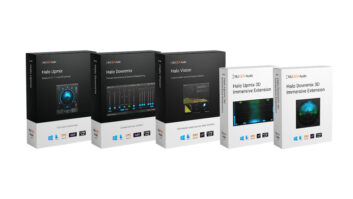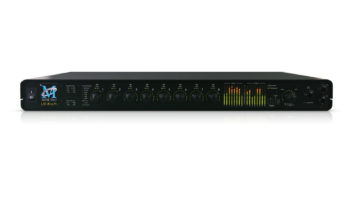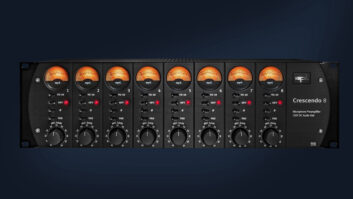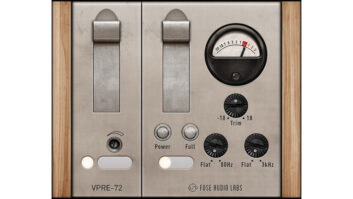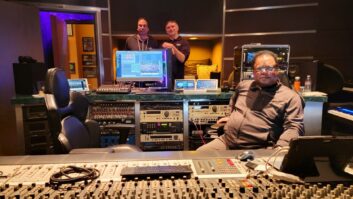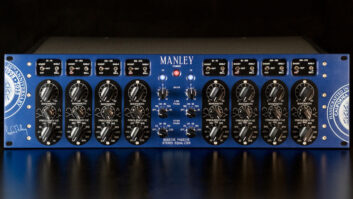SpectraFoo uses FFTs to measure virtually any audio function.
SpectraFoo Complete is Metric Halo Labs’ latest audio analysis software for Mac OS X. Using Fast Fourier Transform (FFT), SpectraFoo’s suite of more than 15 virtual instruments facilitates measurement of just about any audio function that you can imagine.
It’s impossible to describe all of SpectraFoo’s capabilities, so I’ll hit the highlights. SpectraFoo Standard ($400) and SpectraFoo Complete ($800) offer the same features, except Complete augments a core set of instruments with a bit code meter, code matrix meter, code list meter, Transfer Function and delay finder. Common to both versions are level meter, Spectragram, Spectragraph, Phase Torch™, Lissajous phase meter, power balance history, correlation and correlation history.
HOOKING IT UP
Input to SpectraFoo Complete comes from the computer’s built-in audio system or any Core Audio device. With an appropriate audio interface, Complete provides 24 channels of audio analysis in any combination of instruments. (I used MOTU Traveler and Digidesign 002 interfaces.) All instruments have on/off, solo and a control panel. Multiple instantiations made it easy to create a 5.1 monitoring level meter set and an 8-channel Spectragraph display. Instruments may be linked for global parameter changes, and sets of windows can be user-named, saved, recalled and assigned to key shortcuts.
BASIC TO ADVANCED OPERATIONS
Even the most basic of Complete’s instruments — the level meter — is a very useful measurement tool. When initiated, this meter displays dBfs on a horizontal scale from approximately -60 to 0, but you can customize almost every parameter. Grabbing the lower-left corner of the meter resizes it; dragging it downward and to the right changes the scale to vertical.
One of my favorite tools is the Spectragraph, a real-time display of frequency vs. amplitude, showing average, instantaneous and peak level simultaneously, with resolutions ranging from 1 to 1/24 octave, including a Continous mode.
Complete’s Phase Torch is an innovative meter that I used to compare phase relationship between a DI and a mic in a bass rig. When fed with two in-phase signals, this ‘scope displays a multicolor torch tightly aligned to the vertical axis, with frequency represented by color. When a frequency range is out of phase, the torch broadens or dissipates at those frequency colors. The Phase Torch made it easy to bring a bass DI into phase alignment with a miked amp by adding a small delay (1 to 2 ms) to the DI.
Perhaps the most powerful of Complete’s instruments is the Transfer Function. By routing the original signal (the source) into the left channel and an audio system’s output (the response) into the right, Transfer Function calculates differences in power and phase vs. frequency. I split a vocal track, ran the signal directly into the left input and into a high-end analog EQ. The EQ output was patched to the right input of ‘Foo. The Transfer Function windows showed how the input was altered by this EQ. Even when set flat, the unit attenuated certain frequencies and boosted others, no doubt contributing to the euphoric coloration of the device.
To view a P.A.’s system response in a small club, I routed pink noise into the left channel and a measurement mic into the right channel. Noise was played through the system and the Transfer Function displayed the power and phase discrepancies in the P.A. If you’re paying attention, you should be wondering about the “speed of sound delay” from the P.A. to the measurement mic, which creates phase cancellation between the two signals. Transfer Function has a Delay Finder to compensate for this delay automatically. I then took a snapshot of the response and loaded it into the Transfer Function Overlay List, where I could view it and invert it to show the EQ curve needed to flatten the room.
Complete’s Signal Generator creates noise, steady and sweep tones with user-specified start and end points for frequency and amplitude. Though the manual does not specify how to assign its output, it appears that the Generator defaults to internal bus 1, which must then be assigned to an output to route the signal out of the audio interface, making for a convoluted process. I’d rather see an Output menu in the Signal Generator. The only other annoyance I encountered was with the timecode clock: I couldn’t get the control panel open to set routing for the input.
ADEPT AUDIO TOOL
I found all of Complete’s instruments truly useful (though I didn’t really “get” the Code List Meter). What may not be so obvious is that SpectraFoo Complete is a powerful teaching tool that should be a part of every audio education program. I used the Spectragraph to illustrate to students how applying EQ changes spectral balance without altering frequency, and I used the Phase Torch to indicate the aforementioned phase relationship of bass DI and microphone. The results were easily understood, and the students loved it. I highly recommend the ‘Foo.
Metric Halo Labs, 845/223-6112, www.mhlabs.com.
Steve La Cerra is tour manager/FOH engineer for Blue Öyster Cult and an adjunct professor at Mercy College in White Plains, N.Y.

